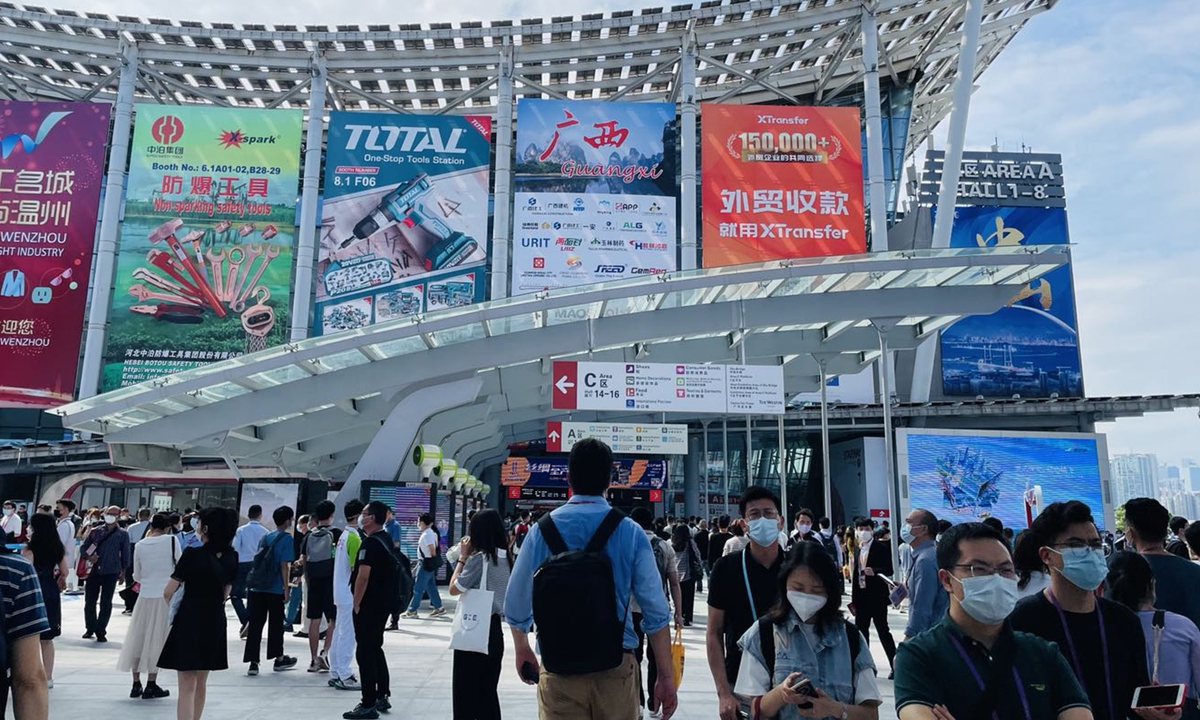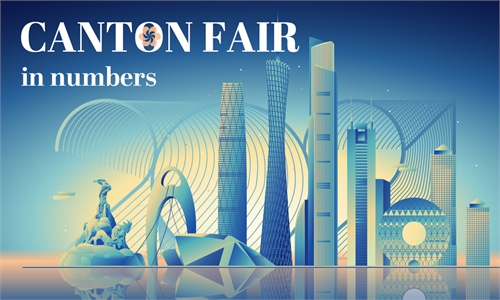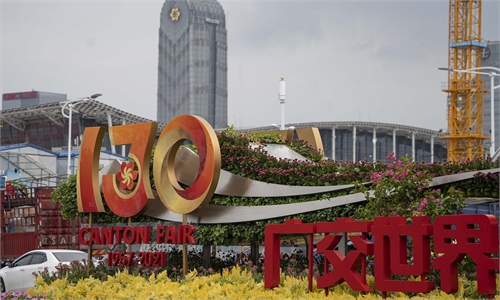
A view of the offline 130th Canton Fair in October 2021 Photo: Chi Jingyi/GT
It was exciting and even emotional to see the 130th session of the Canton Fair held in October, which was again crowded with exhibitors, buyers and services providers at halls covering 400,000 square meters, the size of about 56 football fields, after three sessions held online due to the COVID-19 outbreak.
I remember last October when the 128th Canton Fair was held fully online, and the halls were so empty that it was pretty scary to hear the echoes of your footsteps.
Huge investments, especially in human resources, and efforts from all parties were behind the resumption of the in-person format of the world's largest on-site exhibition in terms of scale amid the pandemic.
The fair just shows China's determination to pursue the dual circulation development strategy - boosting foreign trade while increasing domestic consumption.
The Canton Fair, whose official name is the China Import and Export Fair, was launched 65 years ago to boost foreign trade. As one of the landmark exhibitions of China's foreign trade, the Canton Fair has become a world-recognized international trading event, thanks to China's strong manufacturing sector and improving services sector.
Domestic exhibitors said that China has complete supply and industry chains to guarantee production amid the pandemic, which other countries were not able to do.
"Buyers can not only buy whatever they want at the Canton Fair, they can also choose between different companies. What a luxury!" an exhibitor of porcelain products told the Global Times on Saturday, noting that competition is fierce and his company will release four product brochures in 2021 instead of two as it did annually before.
As the COVID-19 remains severe around the world, epidemic prevention and control is a top priority for the on-site trade carnival as huge crowds gather.
I was notified by the organizer 14 days before the fair kicked off to report my health status every day. I had to upload my COVID-19 vaccine certification to register for the fair, which is a must.
"As far as I know, a lot of overseas buyers still have to participate online as not everyone can be vaccinated in their home countries, and a 21-day quarantine is too long for businessmen," an international buyer surnamed Kwon told the Global Times. She is based in Shenzhen.
International buyers wore passes with blue ropes, while exhibitors used purple, domestic buyers brown and services providers red, which made it easy to recognize potential customers at first glance.
I saw businessmen come and go in haste, exchanging name cards after seeing the color of each other's ropes.
Such details are only one of many proofs of the efficient, thoughtful service of the Canton Fair, which impressed me the most. Organizers provided all the kinds of services that they can.
Why Guangdong became a major foreign trade province in China can be explained partly from such meticulous service, which can be seen from the Canton Fair.
That card is an innovation of the 130th Canton Fair, on which a bar code stores pandemic prevention information so that participants can quickly pass the security check. Whoever enters the exhibition halls must have a negative result of a nucleic acid test within 48 hours.
To facilitate nucleic acid tests for participants, Guangzhou increased test spots at about 230 hotels, train stations, metro stations and inside the Canton Fair exhibition halls, which means a huge amount of medical and human resources, organized in an orderly manner.
There were at least four staffers at each test spot that I observed. I also found that there were usually more than two staffers at every booth. As there are 19,181 booths in the exhibition hall, meaning at least 20,000 people entered the Canton Fair exhibition hall every day, the volume of medical materials used for nucleic acid tests can thus be imagined. Testing was free for participants.
Such details and efforts behind the world's biggest trade fair amid a global pandemic also offer a valuable perspective about how China became the world's biggest trading nation and the fastest recovery major economy.


